Earwig Removal and Beetle Control Services in and near Menifee, CA
Menifee Earwig Removal & Beetle Control
Beetles and earwigs are two pests that can invade your Menifee area home. If you see one or several of these creepy crawlies, you will want to be able to identify them right away. Only with proper identification can we EXECUTE your pest problem fast with proven solutions for long-term earwig removal or beetle control.
What follows is your homeowner’s guide to beetle and earwig identification. Learn the difference between the two so you can call for pest control with confidence knowing what kind of pest issue you are facing. We are one of the best choices you can have for earwig removal and beetle control in Menifee, Riverside, Moreno Valley, Perris, Temecula, Murrietta, Lake Elsinore, San Bernardino, and Rialto CA.
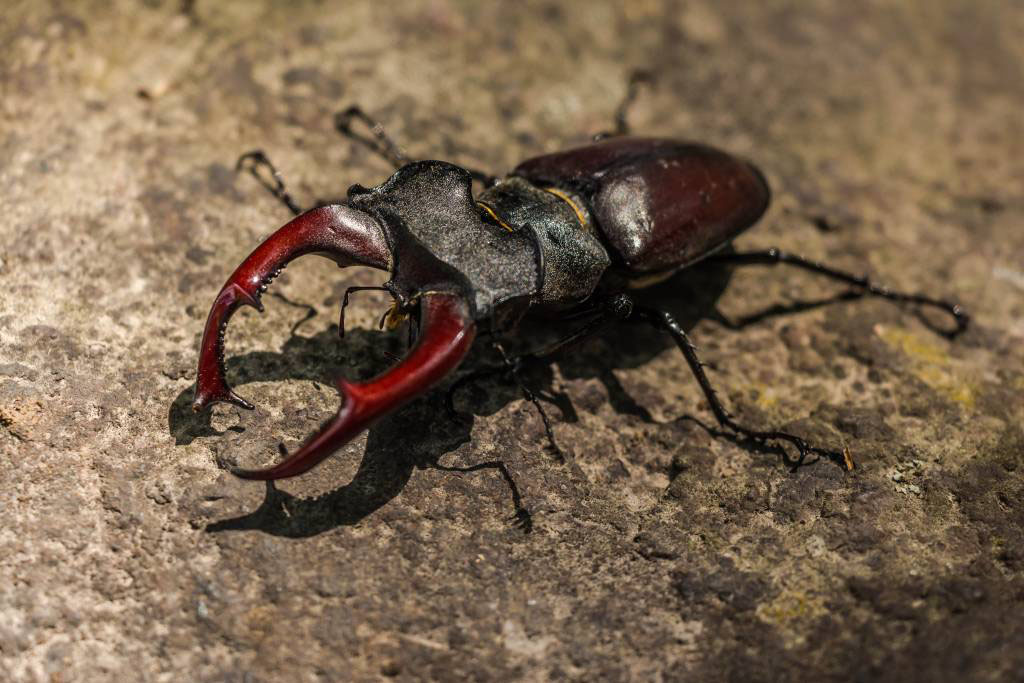
How to Differentiate Between Beetles and Earwigs
Beetles
There are many different species of beetles that can invade California homes, but we want you to be aware of three in particular. These wood-boring insects can cause destruction in your home similar to termites and mold. Learn about these cretures for beetle control in and near Menifee, CA.
Powderpost Beetles
This brownish or reddish beetle gets its name because the larvae tend to create a fine, dustlike powder that has the consistency of talcum powder and is comprised of a mixture of feces and wood fragments. Known as boring dust, the power is packed into the larval galleries, which act as feeding channels for the young. The dust can also fall out of exit holes to create small piles on the floors or other surfaces, which is when the homeowner usually discovers an infestation.
These beetles love hardwoods, because these types of woods have pores into which powderposts can lay eggs. They love bamboo, which tends to have extra-large pores compared to other woods, but the beetles also prefer very dry woods that are high in starch.
The adult beetles lay their eggs in woods like oak, hickory, ash, mahogany, and walnut, which means that your infestation could likely start in your wood paneling, flooring, door frames, window frames, and furniture.
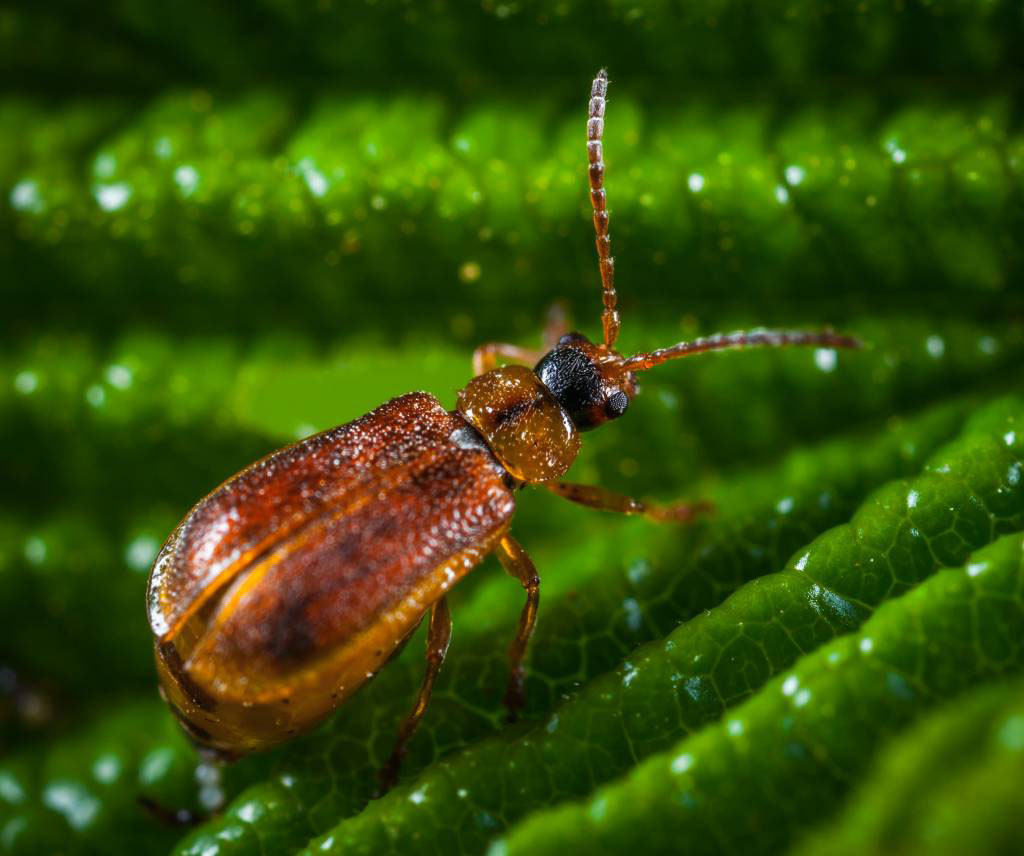
Oh, and those bamboo fixtures in your home? You may have dozens of powderpost eggs ready to hatch already.
The beetles can also enter your home by hitching a ride on furniture, firewood, and wooden decorations that are brought into your home.
Aside from piles of powder, you can usually identify a powderpost beetle infestation by the round exit holes the adults make when emerging from tunnels. The winged adults crawl out of the holes, where they then lay eggs on the various wood surfaces throughout your home. These insects tend to fly toward the light, so look for dead beetles along your windowsills and near other light sources.
Powderposts have a lifecycle that ranges from three months to a full year, depending on conditions like temperature and humidity.
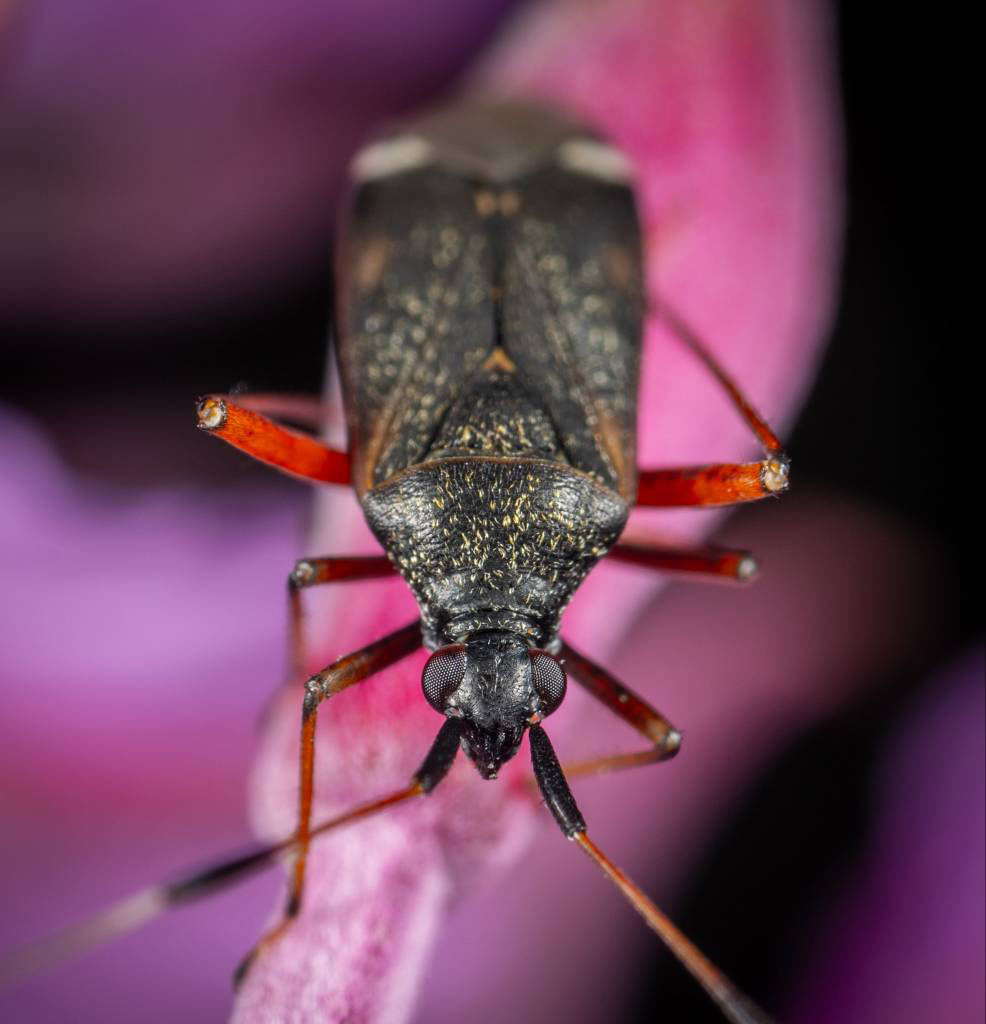
Deathwatch Beetles
These reddish or dark brown, wood-boring beetles get their name from the way they tap their heads against wood, typically at night. The insects likely acquired their name during medieval times when people heard the tapping while sitting with a sick or dying person. The sound of the beetles’ tapping was attributed to the tapping of the grim reaper’s staff in preparation to take away the deceased.
These beetles infest softwoods, particularly the Douglas-fir, which means that an infestation can begin in your home’s foundation timbers, girders, beams, and furniture. The beetle can be found on good wood, but also wood that is partially decayed. They prefer moist wood and usually enter your home by way of outdoor foliage.
Deathwatch beetle larvae fill egg galleries with small pellets of frass. The frass has a gritty consistency and can be seen in small piles as they are pushed through tunnel exit holes.
The insects lay eggs in crevices or pores of unfinished wood. It can take two years to complete a generation of deathwatch beetles.
False Powderpost Beetles
These wood-boring beetles prefer hardwoods and the occasional softwood. They enter into the U.S. on bamboo materials and on woods imported from areas like the Philippines. These beetles bore their tunnels and egg galleries into the wood in and around your home. The larvae pack the galleries with frass that is coarse and has the consistency of borax soap. The texture of the frass is, in fact, the way experts distinguish the false powderpost from the powderpost and deathwatch beetles.
You might have an infestation of these beetles on your floors, hardwood paneling, and furniture. With some species of soft powderposts, the adults can bore through soft metal, such as silver and lead. The adults also commonly tunnel into plaster and other non-wood materials in search for areas to deposit their eggs or to seek cover from extreme weather. This tendency to sometimes eat metal has earned the false powderpost the nickname “leadcable borer” and for its tendency to bore into the metal coverings that protect telephone and electric cables.
Wine makers know this beetle well, as false powderposts like to attack wine-soaked oak barrels or the corks used in wine making. This tendency to enjoy wine-covered materials has earned the bug another nickname, the “cask borer.”
The adult false powderpost has a varied life cycle. Most species develop in one year, but the black Polycaon variety can take up to twenty years to develop. You see this species in California infesting woods like cherry, walnut, oak, ash, and madrone, and tends to focus on raw flooring material still at the mill or in holding areas where lots of construction materials can be found.
Earwigs
Earwigs are tiny brown, black, or reddish insects (about a half-inch in length) that can be identified by their forceps-like pincers (cerci) that protrude from their rear end. Some earwigs bear wings but rarely take flight.
The earwig is commonly feared because of its name. Many falsely believe that earwigs got their name from their tendency to burrow and lay eggs inside human ears. This is a myth that is patently false. Earwigs, instead, get their name from the Old English words eare (ear) and wicga (insect).
The insects are mostly active at night and hide during the daytime. You will typically see the insects living outdoors where they feed on plants, fungi, and decaying matter. Earwigs also feed on plant lice.
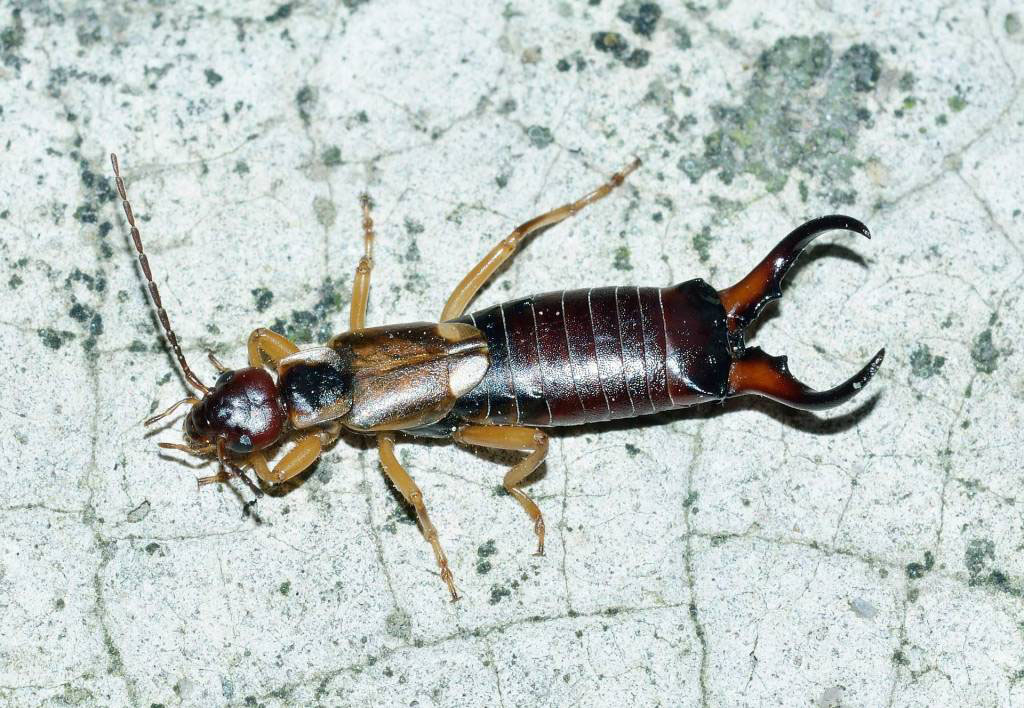
Earwigs can enter your home by crawling under doors or through cracks in your foundation. If you notice one, you don’t have to worry, as earwigs are harmless to both humans and animals. However, don’t think that you can pick one up and handle it, as you could be bitten. The earwig bites using its pincers, which are normally used to hold prey and as a weapon against other insects or during mating.
Earwig females lay eggs by the dozen. When actively breeding, the female will lay her eggs in clusters on the ground, whereby the young will hatch in or around eight to ten days.
Once hatched, the nymphs of the species will go through several instars or phases before becoming adults. This period takes around 20 to 80 days before the earwig young reach maturity. The female will continue to tend to her young until the nymphs are able to fend for themselves.
If you have earwigs in your home, the average female can produce one to two generations throughout the year. The insects tend to breed more rapidly during the spring and summer. During the colder months or extremely dry and hot summers, the insects tend to be inactive or hiding.
The Menifee area is home to three varieties of earwigs. Learn about these tine cretures for earwig removal in & near Menifee, CA.
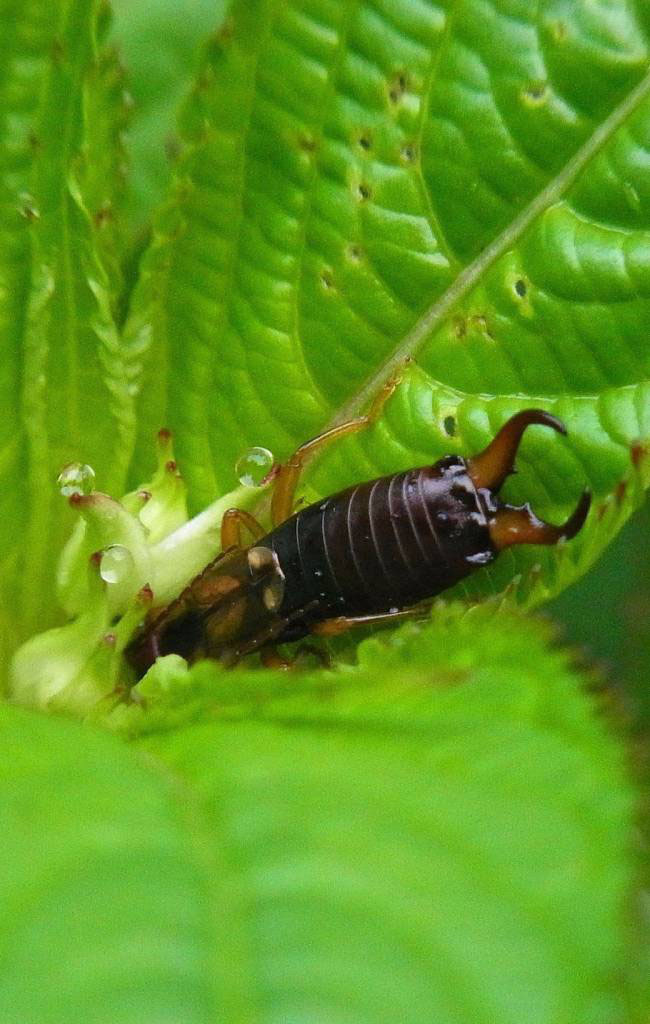
European Earwig
This version of the species originates from Europe and was introduced to the United States in the early 1900s. Today, you see this insect existing throughout much of North America.
The European earwig mostly prefers a diet of aphids as opposed to plant material, with the adults eating more insects than nymphs. These earwigs tend to find their way inside your home by hitchhiking on newly cut flowers, luggage, or in bundles of newspapers. European earwigs can also find their way inside your car, whereby they can hitch a ride on your clothing or belongings to eventually nest inside your home.
Maritime Earwig
This variety of insect is dark and wingless with yellowish legs. Maritime earwigs tend to feed on many different kinds of small insects, such as crickets, beetles, fleas, and even other earwigs.
Because they tend to thrive near coastal waterways and on beaches, these earwigs are often located under rocks, and on driftwood or seaweed during the day. The insects cannot swim but prefer dark and damp or humid places.
You might also hear maritime earwigs called by another name, the Seaside Earwig. Call us to get the earwig removal your home needs.
Ring-Legged Earwig
These insects are dark brown and wingless. The earwig gets its name from its legs, which are pale with two dark bands. Entomologists and exterminators have known this insect to exist throughout the United States since the early 1900s. The adults can be found in your home throughout the year. In the colder times of the year, the insects tend to burrow underground.
The ring-legged earwig is a voracious predator that will consume all kinds of plant material, though it prefers dead plant matter to plants that are living.

